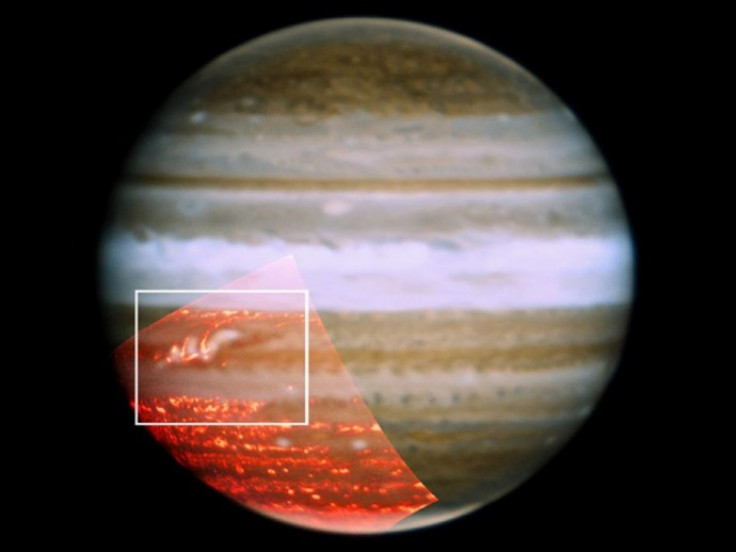Jupiter Gets Back Its Missing Stripes

Researchers have found that one of the Jupiter's stripes that disappeared last spring is now showing signs of a comeback. The latest observations will help scientists better understand the interaction between Jupiter's winds and cloud chemistry.
In May, amateur astronomers noticed that a longstanding dark-brown stripe, known as the South Equatorial Belt, just south of Jupiter's equator, had turned white. In early November, amateur astronomer Christopher Go saw an unusually bright spot in the white area that was once the dark stripe.
I was fortunate to catch the outburst, said Go, referring to the first signs that the band was coming back. I had a meeting that evening and it went late. I caught the outburst just in time as it was rising. Had I imaged earlier, I would not have caught it, he said.
After follow-up observations in Hawaii with NASA's Infrared Telescope Facility, the W.M. Keck Observatory and the Gemini Observatory telescope, scientists now believe the vanished dark stripe is coming back.
Every few decades or so, the South Equatorial Belt turns completely white for perhaps one to three years, an event that has puzzled scientists. This extreme change in appearance has only been seen with the South Equatorial Belt, making it unique to Jupiter and the entire solar system.
Scientists say the white cloud deck in Jupiter is made up of ammonia ice. When the white clouds float at a higher altitude, they obscure the missing brown material, which floats at a lower altitude.
The reason Jupiter seemed to 'lose' this band - camouflaging itself among the surrounding white bands -- is that the usual down welling winds that are dry and keep the region clear of clouds died down, said Glenn Orton, a research scientist at NASA.
One of the things we were looking for in the infrared was evidence that the darker material emerging to the west of the bright spot was actually the start of clearing in the cloud deck, and that is precisely what we saw, Orton said
Observing this event carefully may help to refine the scientific questions to be posed by NASA's Juno spacecraft, due to arrive at Jupiter in 2016, and a larger, proposed mission to orbit Jupiter and explore its satellite Europa after 2020.
Meanwhile, the white band wasn't the only change on the big, gaseous planet. Researchers have found that Jupiter's Great Red Spot became darker red in color. Orton said the color of the spot -- a giant storm that is three times the size of Earth and has raged for at least a century and a half -- will likely brighten a bit again as the South Equatorial Belt makes its comeback.
The South Equatorial Belt underwent a slight brightening, known as a fade, just as NASA's New Horizons spacecraft was flying by on its way to Pluto in 2007. Then there was a rapid revival of its usual dark color three to four months later.
The last full fade and revival was a double-header event, starting with a fade in 1989, revival in 1990, then another fade and revival in 1993. Similar fades and revivals are likely to be a long-term phenomenon in Jupiter's atmosphere.
Jupiter is the fifth planet from the Sun and the largest planet within the Solar System. It is a gas giant with a mass slightly less than one-thousandth of the Sun but is two and a half times the mass of all the other planets in our Solar System combined.
© Copyright IBTimes 2024. All rights reserved.











